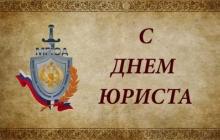Abstract
GCD for application in preparatory group.
Topic: Early spring.
Goal: To consolidate the ability to work with cotton pads and colored paper.
Program content:
Formation of the ability to follow oral instructions,
Foster work cultures and improve work skills,
Develop artistic taste And Creative skills.
Preliminary work: conversations about animals living in the north.
Equipment: white cardboard, cotton pads, colored paper, scissors, glue, pictures early spring, sample.
Progress of the lesson:
Children, I will tell you a riddle, and you try to guess it.
The streams rang,
The rooks have arrived.
To your home - a beehive
She brought the first honey.
Who's to say, who knows
When does this happen?
Children: In the spring. In the riddle, we hear signs of spring. Children, but spring doesn’t come right away. Tell me, please, what kind of spring is there? Children: Early, middle and late. Tell me, what signs of early spring do you know? Children: The snow is melting, thawed patches are appearing, icicles are appearing on the roofs, rooks are flying in, streams are flowing, snowdrops are appearing, the sun is warming stronger, the days are getting longer. Well done guys, everything is correct. Look at the spring pictures. Would you like us to depict early spring? Children: Yes.
To do this, I suggest you take white cardboard, since the snow has not melted yet, our background will be white. And with the help of colored paper we will depict the signs of early spring - birds, the sun, thawed patches, streams, the sky, you can depict trees and shrubs. We also have cotton pads, from which I suggest you make snowdrops and ice that floats down streams. Look, I have prepared a sample for you. And now I suggest you get to work.
I remind you to work carefully with scissors and glue. The children get to work. At the end of the lesson, we mark the most accurate works, the best, in the opinion of the children, and take them to the exhibition.
Abstract directly educational activities on application in senior group No. 2 “Why”
Educator: Kumarova G.D.
Theme: Spring landscape
Target: teach children to create a landscape composition, show the possibilities of different means of artistic expression for conveying created image.
Tasks:
Clarify and consolidate ideas about changes in nature in spring and its signs;
Shape grammatical structure speech and activate children's vocabulary;
Improve your cutting technique with scissors;
To develop the ability to convey the beauty of nature in applications, to develop aesthetic perception.
Preliminary work: walks, observing spring changes, reading fiction, memorizing poems, looking at paintings about spring.
Equipment: oilcloth, colored paper, scissors, glue stick, napkins, reproductions of paintings about spring, ready-made blanks - frames.
GCD move:
Organizing time.
Children enter the group and see a letter.
Educator:
Someone threw it to me at the window,
Look, the letter.
Maybe it's a ray of sunshine
What's tickling my face?
Maybe it's a sparrow
While flying, did you drop it?
Maybe someone's letter is like a mouse,
Lured to the window?
Who did the letter come from?
You want to know, right?
Then you have to try
You have to guess the riddle.
Mystery:
If the snow melts everywhere, it turns into a stream,
The grass timidly comes out, the day gets longer,
If the sun shines brighter, if the birds have no time to sleep,
If the wind has become warmer, it means that it has come to us ( spring).
That's right, well done, the letter came from spring.
She comes with affection
And with my fairy tale.
With a magic wand will wave,
The snowdrop will bloom in the forest!
Let's read what she writes to us:
"Dear Guys! You're all happy spring sun, I'm calling drops, running streams? (Yes). I invite you to my spring lawn.
I will be glad to see you here! "Spring".
Let's go to Spring. How would we get there? (children's answers).
Let's fly there on the clouds. Do you agree?
Children imitate flying on airy, light clouds.
Look, here is a spring meadow. And a magical Spring greets us.
Draws attention to the screen (spring landscape).
Name the spring months in order (March, April, May).
Let's look at Spring and name the changes in nature that occurred with the onset of spring?
Showing pictures of spring signs.
- INMarch , Who chief assistant spring? (Sun). The sun is shining brightly, warming, the snow is melting, drops are ringing, buds are blooming on the willow, the first thawed patches are appearing, the first flowers are growing from the snow - snowdrops.
In a prele - the sun shines even brighter, the snow turns into water, streams run, rivers rumble, ice melts on lakes and rivers, animals change their fur to lighter, change colors, animals have cubs, birds return from distant countries, build nests, hatch chicks .
- In May – the first green leaves and green grass appear on the trees, trees and bushes bloom, various insects wake up, flowers bloom, the sun shines brightly, everything is green and beautiful.
Which spring did you like best? (early, middle, late).
Let's take a little rest and play the game "Freckle".
Physical education minute:(perform movements according to the text)
The wind blows in our faces
The tree swayed.
The wind is getting quieter, quieter,
The tree is getting higher and higher.
Sunshine, sunshine
Golden Bottom
Burn, burn clearly
So that it doesn't go out,
A stream ran in the forest
A hundred rooks have flown
And the snowdrifts are melting, melting.
And the flowers are growing!
Our first flowers
Petals open
The breeze breathes a little
The petals are swaying.
Our first flowers
Petals close
Shake your head
They fall asleep quietly.
Shall we wake up the flowers?
Spring! What a kind and gentle word. Spring is an amazing time of year. The spring warmth makes everyone feel very good. People are happy to expose their faces to the gentle spring sun. The image of spring has many faces. This is beautiful nature, the arrival of birds, flowering, and delicate green foliage.
Explanation of the work.
And today, you and I will become wizards and paint an unusual spring picture. Let us convey in it all the beauty of late spring.
Here we have some preparations, in these paintings spring has not yet come.
How can we help in spring? What can we do, do you think? ( glue a bright sun and white clouds, make green leaves on flowers, grass, etc.).
How do we depict a bright sunny day?( we will paste the sun and white clouds).
You have squares on your plates yellow color, we will cut out the sun and a flower from the squares. From a green rectangle - grass and leaves.
Independent activity children.
Analysis of works.
What kind of work did we get?
What do you like about your work?
What kind of work do you like best? Why? (children's answers)
YI. Summing up the lesson.
You guys are real magicians today, and our pictures turned out to be truly magical and unique.
What a sorceress Spring is!
Where does she have so much strength?
Having barely woken up from sleep,
She awakened nature.
Waving a magic wand,
She melted the snowdrifts.
And without immediately resting,
She paved the way for the streams.
And the air is clean and the distance is clear!
Nature sings, coming to life.
Yes, you are a sorceress, Spring!
Now I know this for sure!
Zhanna Motorina
(spring paintings in frames)
Tasks. Arouse interest in the design of your works as the final stage of creativity. Create conditions for the creative use of acquired skills; continue to teach children how to plan their work. Develop imagination, sense of rhythm and composition.
Preliminary work. Looking at paintings by famous artists with children - landscape painters I. I. Levitan “March” and “Big Water”, A. K. Savrasov “The Rooks have Arrived”, F. A. Vasiliev "Thaw".
Reading the poem by V. Nabokov " Spring":
The world is excited by the spring breath,
The birds have returned and the streams are ringing
Bells of moisture.
Chilly
In the fields, and fun in the forest, where
Even if you step, there is a large lily of the valley. Like water
The azure trembles - both pitifully and greedily
Looks at the world. Birches by the river -
There, in the clearing, not forgotten by the heart,
They crowded together and so simply, businesslike
Unfolding sticky sheets
As if this is not a miracle at all,
And in the blue there are two thin cranes
They hesitate, and maybe from there
They think the earth is green
An unripe, wet apple.
For We need landscape applications:
For drawing: sheets of tinted blue paper 15 x 21 cm, brushes of different sizes, foam sponge.
For appliqués: cardboard, colored paper, scissors, glue stick, napkins, oilcloth.
Progress. Children look at the paintings by I. I. Levitan “March” and “Big Water”, A. K. Savrasov “The Rooks Have Arrived”, F. A. Vasiliev "Thaw". We talk about the content and mood of the paintings. Then the children are invited to read F. Tyutchev’s poem “Spring Waters”:
The snow is still white in the fields,
And the water in the spring they make noise -
They run and there will be a sleepy shore,
They run and shine and shout.
They shout all over the place:
"Spring is coming, Spring is coming!
We are young spring messengers,
She sent us ahead!"
Spring is coming, Spring is coming!
Children get to work and draw spring pictures as they wish, then decorate them with beautiful frames.
1. The frame is made from a sheet of cardboard in A4 format.
2. The finished picture is glued to cardboard. First, the picture is outlined with a pencil to mark the border for applying glue.
3. Then a frame is made according to the children’s wishes. The frame design maintains a spring theme.

Children make their own frames and decorate spring paintings with them.

Look what we have happened:


Together with the children we design paintings for the exhibition" Spring is coming!" Tour of the exhibition. Two or three children act as guides and talk about the paintings they like.
Daria Voronina
Summary of GCD for application in the preparatory group “Spring Garden”
Summary of a lesson on application in a preparatory school group« Spring garden» .
Goals:
1. Educational.
Teach children to place parts harmoniously appliqués, strengthen the ability to work with stamps. Continue to teach children to combine various techniques execution appliqués to create a beautiful, harmonious composition, applying previously acquired knowledge.
2. Developmental.
Strengthen communication skills, develop children's creative abilities, fine motor skills, tactile perception using various materials.
3. Educational.
Cultivate interest in artistic creativity, independence, artistic taste.
Preliminary work:
Conversations about spring;
Examination of paintings, illustrations, postcards on this topic;
Listening to poems and riddles on this topic;
Observations of changes in nature.
Material for the lesson:
Whatman paper, threads different lengths, peas, rice, beans, corrugated paper, pencils according to the number of children, stamps of flowers, butterflies from vegetables (potatoes, carrots, zucchini, lettuce, colored paper different colors, sockets with glue, brushes, napkins.
Progress of the lesson.
Organizing time.
Children enter and stand around the teacher.
Educator:
In the forest spring, for a walk
I invite you to go.
More interesting adventures
We guys can't find it.
Stand next to each other
Hold your hands tightly
Along the paths, along the paths
Let's go for a walk in the forest.
Today we are going on an extraordinary journey, to a land where miracles happen. This country is called spring. And while we're walking, I'll tell you about this country. In this country, the sun laughs tenderly, the stream runs loudly, the snowdrifts melt, the snow becomes heavy and dark. The sun warms everything with its warmth around: green leaves appear from small buds, a beautiful willow blossoms, birds chirp and sing, green grass rustles underfoot.
There is no snow there, there is no cold,
Everything there woke up from sleep.
We came from the city
To a wonderful land - Spring! (slide 1,2,3,4)
Well, guys, we've reached it. There's something really wrong here sad. Everything is white and white. Guys, look, the sun is greeting us! But for some reason it is not affectionate, it does not smile at all.
Sun: Hello guys! The beautiful Spring had trouble in her magical land. On Spring An evil Blizzard flew into the garden, covered it with snow, and froze all the flowers and trees. The snowdrifts are so deep that my rays cannot penetrate. Help me guys melt the snow. (slide 5)
Educator: What did the evil Blizzard do, she didn’t spare a single flower or tree. We will restore it with you Spring garden, let's plant new flowers and trees and make it even better.
Practical part.
Educator: now let's remember what grows in Spring garden? (slide 6.7)
Children's answers.
Educator: guys, tell me how we can make trees? What and how will we make the trunk? (slide 8,9)
Children's answers.
Educator: What will we make the tree foliage from? (slide 10)
Children's answers.
Educator: Well done, we can also add beans. What else can we make tree foliage from? (slide 11)
Children's answers.
Educator: Guys, we will make flowers and butterflies using stamps and paint. What technique will we use to make weed? (slide 12,13)
Children's answers.
Educator: Let's remember how we will perform this technique?
Children's answers.
Educator: What is the name of the corrugated paper blank?
Children's answers.
Educator: guys, you can create in our Spring garden, whatever you want. If you want to make a tree, you need to use paper, thread or cereal (peas, beans, rice). If you want to make flowers and butterflies, you will need to take stamps and paint. If you want to make grass, you need to take ready-made templates and use the trimming technique to fill them in, and then glue them onto a common canvas. Schemes for the trimming technique are on the board, and you can use them.
Educator: Now that we have remembered everything, we can get to work, but first we will rest a little.
Fizminutka:
We will become trees (walk in place)
Strong, big.
Feet are roots (feet shoulder-width apart, hands on waist)
Let's space them wider
To hold the tree (fist to fist)
They didn't let me fall
From the depths of the underground (bent over, palms cupped)
They got water
Our body is a strong trunk (bend over, palms down the body from top to bottom)
He sways a little.
And with your top (hands in a hut)
It touches the sky.
Independent work of children.
Educator: rested. But before we get started, let's say these words: “I’ll sit straight, I won’t bend, I’ll get to work.”. Now you can get to work.
Independent activity of children.
In the process of children's activities, the teacher encourages independence, accuracy, and creativity. The teacher provides assistance to those children who find it difficult to work. (slide 14)
Final part.
Educator: Guys, look, the sun has begun to smile! It gives us warmth again. It's time to say goodbye to wonderful country- Spring. We need to return home. (slide 15)
Did you guys enjoy the trip? What do you remember most?
Children's answers.
So you and I have returned to kindergarten. Let's pass on our good mood, our warmth to each other. Do you agree?
Warm your palms with your warmth (children imitate silent claps). Warm your palms and transfer warmth to each other.
Our delicate flowers (smoothly open fingers)
The petals are blooming.
The breeze breathes a little, (wave their hands in front of them)
The petals are swaying.
Our delicate flowers (close fingers tightly)
The petals close.
They shake their heads, (smoothly lower them onto the table)
Quietly falling asleep
This concludes our lesson. Well done everyone, you did very well.



